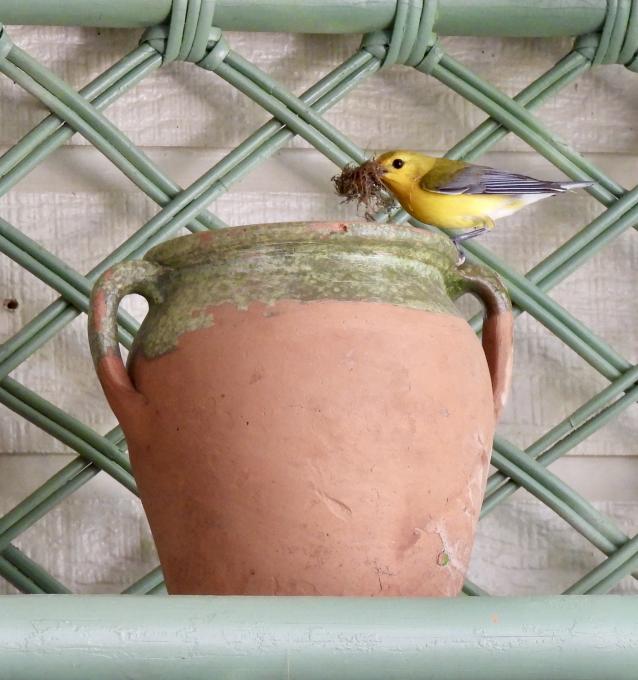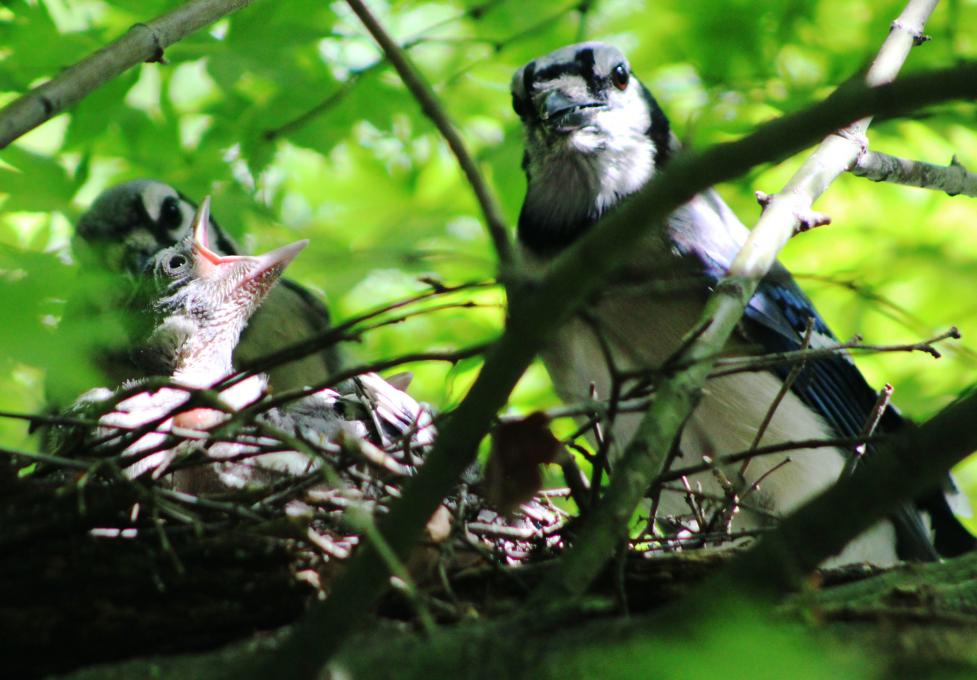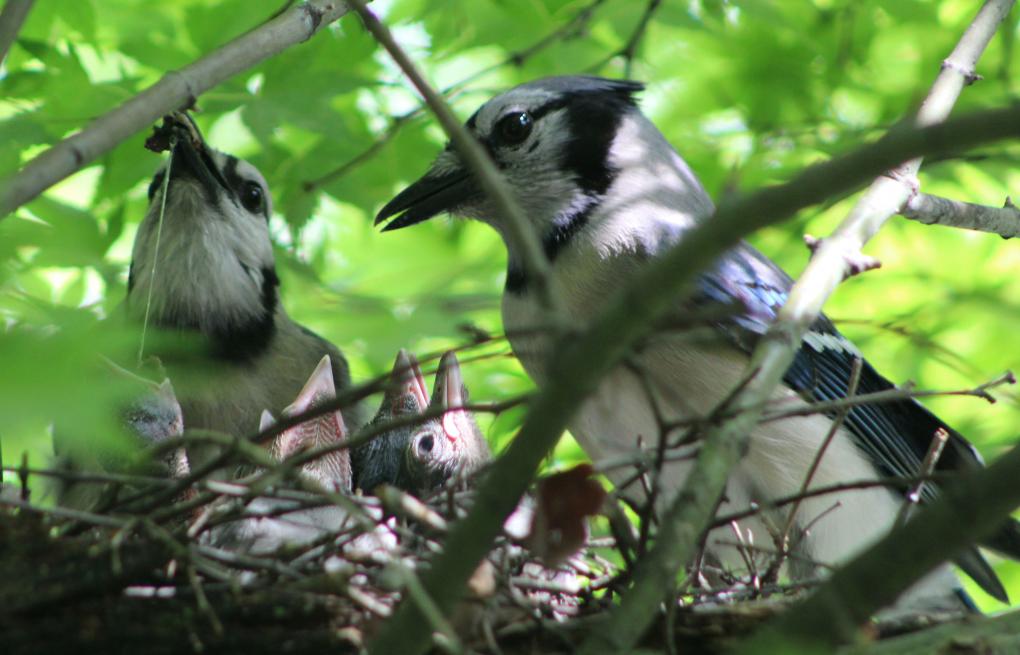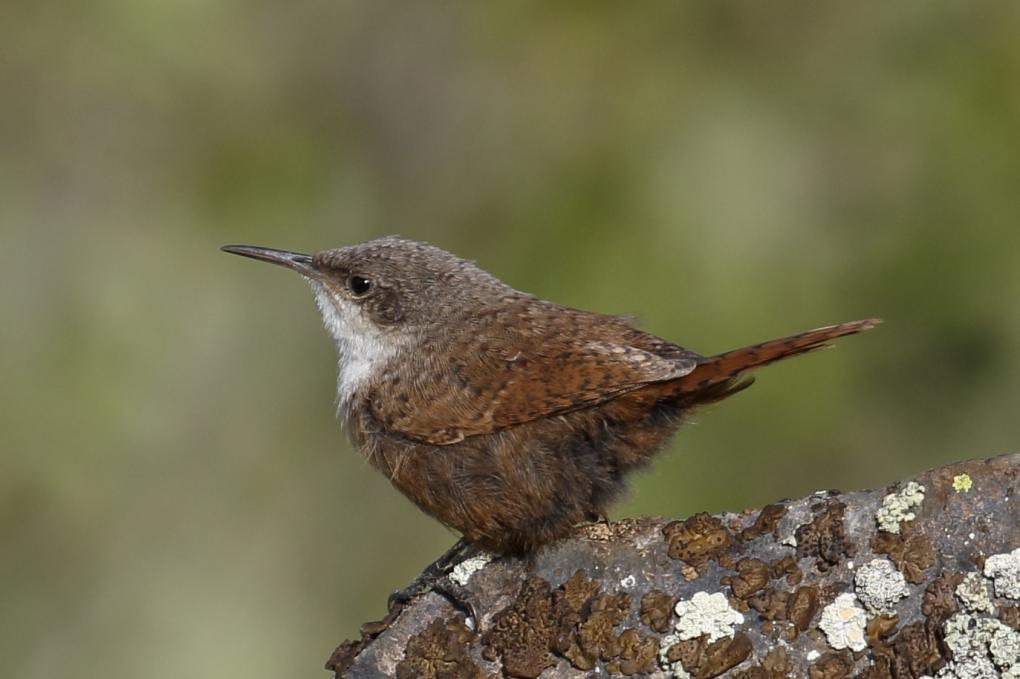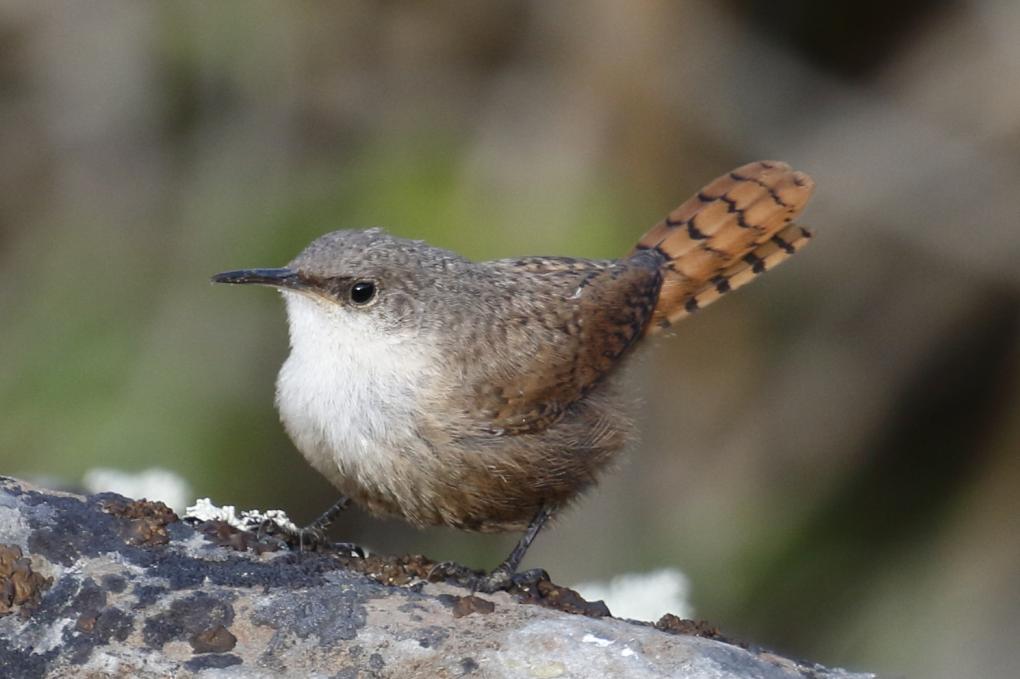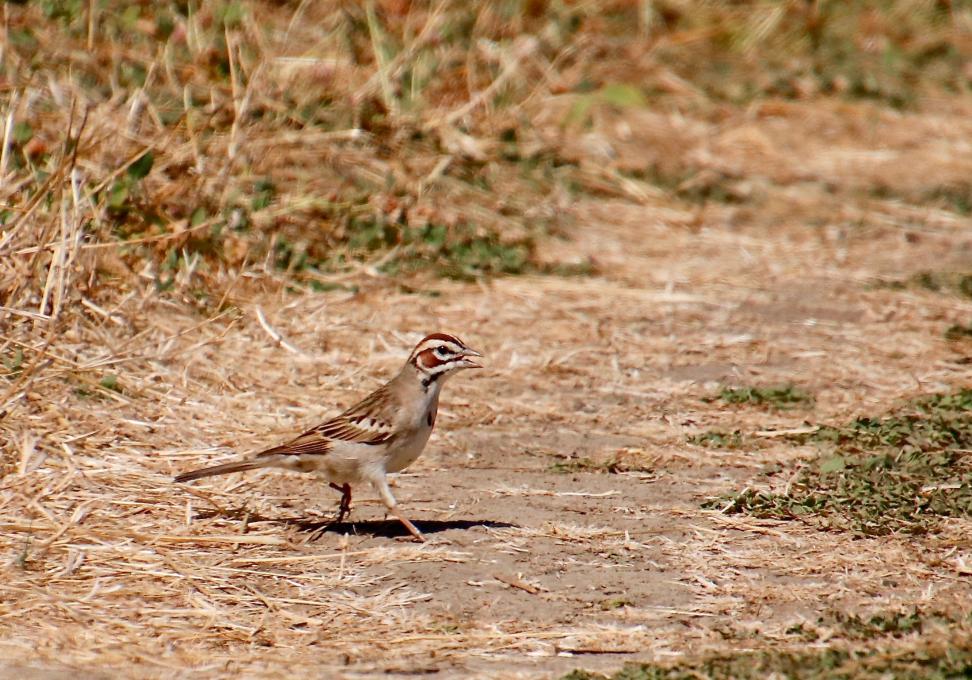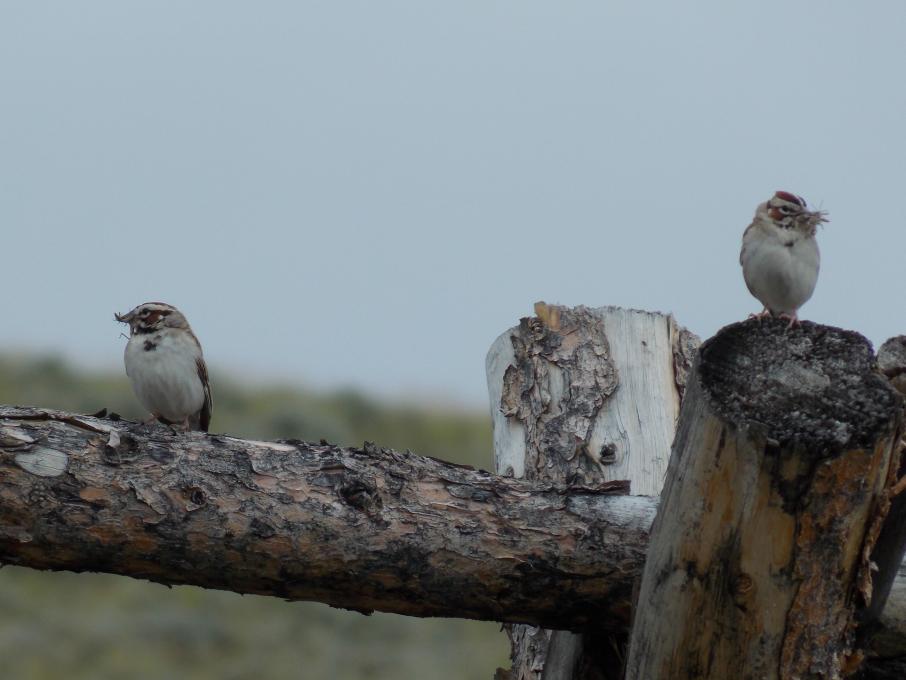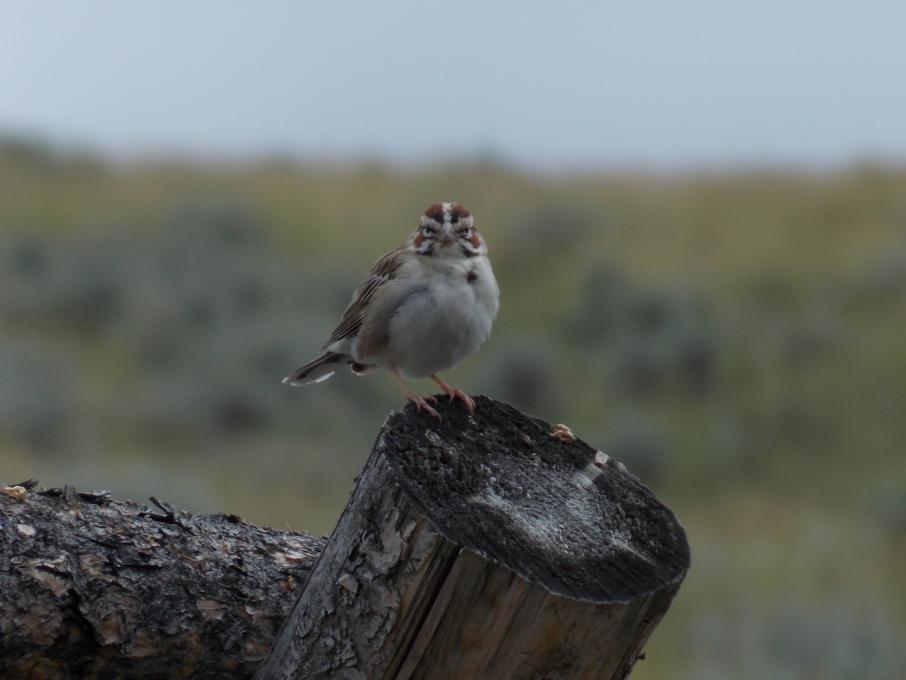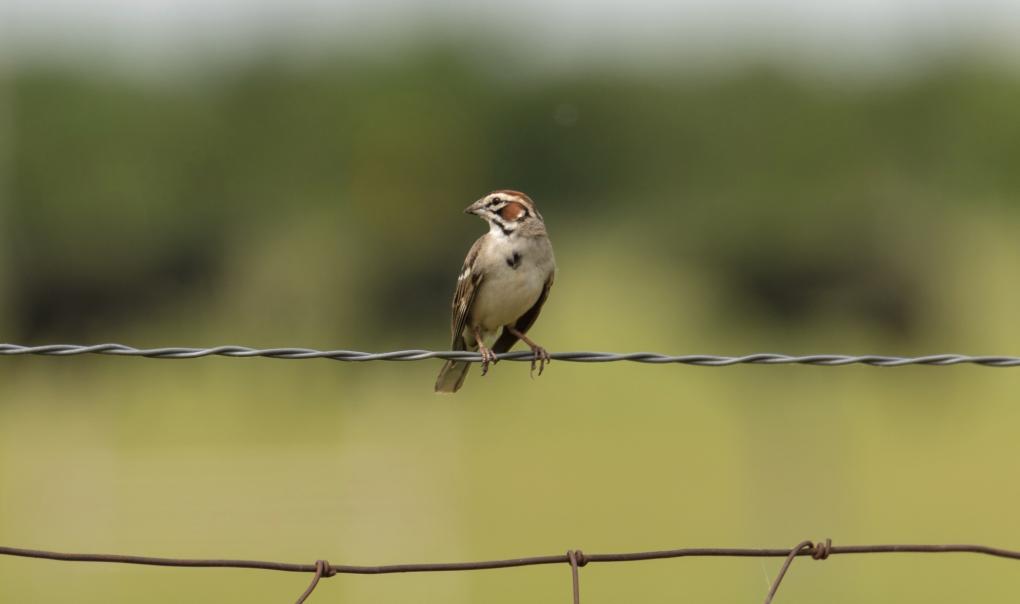The Cornell Lab Bird Academy › Discussion Groups › Bird Photography with Melissa Groo › Practice Understanding Birds for Better Photos
-
American Goldfinch taken 6/23/2020 I love watching these birds at our feeder however these images were taken on a road trip thru Missouri. When driving thru we always visit the Columbia Bottoms Conservation area, just outside of St.Louis. The area is mostly wetlands or prairie like. Goldfinches are a common backyard bird in Kansas where we live. They are a year round resident. They prefer open habitats as well as one's yard, and Columbia Bottoms is definitely open habiitat. They eat seeds and seem to arrive in flocks to the feeder, and are often joined by house Finches. In the photos they are eating the common roadside weed/wildflower. Chicory. They seem non aggresive and have gotten quite used to us when we sit outside. They have a high pithed sweet sound when at our feeder. They nest late in the summer, July to August, when more seeds are abundant and use the "downy seed heads " to pad their nest. The males are the vibrant yellow and black and the females or more dull olive green. I have noticed this week that more females have returned to the feeder.



-
In Florida, the American Goldfinches take over our feeders in January & February. They prefer thistle, but only “fresh” thistle! If any has been kept from the previous year and put out for them, those goldfinches won’t touch it! They only want the new good stuff!
-
@Karen Ours wouldn’t eat the thistle, which had never happened any place we have lived before, but love sunflower hearts & chips. I love watching them. We have quite a few but I have not seen any adults feeding any young.
-
-
House Finches intrigue me because they seem to bring the whole family along to the feeder. In fact, I suspect the smaller birds joining in this morning are juveniles. They look like smaller versions of the females. The smaller "juveniles" preferred the platform feeder to the tube; one female perched on the edge as though she was the lookout. Though I read a lot about these finches, it's not clear to me whether they pair up for nesting, or if one male has several girlfriends. When they come as a group to feed, there are always several females but only one or perhaps two males. I have a plan for photographing them tomorrow that I hope will give me better, closer shots. This old 200mm lens takes some special care.
-
I had a juvenile this morning at the feeder with its dad. While the male ate, the juvenile waited while flapping its wings and making lots of sounds, beak open begging for food - that is how I knew it was a juvenile. Having observed this behavior for a few days I was ready with my camera and took several shots of the dad feeding the juvenile. He ate until its beak was full of mushy seeds and then he transferred it to the juvenile open beak. It did it in two or three exchanges. It was very interesting to watch. Hope you can witness a similar feeding tomorrow.
-
Would love to see your pics of them being fed.
-
@Betty


 Hi Betsy. Here is a little sequence for you. The feeding lasted about 15 seconds and the dad gave a little bit of mushy seeds to the juvenile about 7 times. Looking closely at my photos and then doing more research it seems that he regurgitates in between.
Hi Betsy. Here is a little sequence for you. The feeding lasted about 15 seconds and the dad gave a little bit of mushy seeds to the juvenile about 7 times. Looking closely at my photos and then doing more research it seems that he regurgitates in between.
-
-
I am in complete awe of the beauty of the blue jays that visit my bird feeder daily. Behind my backyard there is an area with tall trees and now I wonder if they have built their nest there. I am eager to go explore this area and try to find them and take pictures of them in the trees.



-
I have been intrigued by Bell's Vireo ever since I first heard it sing a few years ago. Its song is not very musical at all, but rather a harsh, buzzy song often sung as a couplet. It tends to be a secretive bird fond of scrub and shrubby habitats, often heard but not seen. So, my goal has been to capture a really nice photo. It typically arrives in our part of Indiana the end of April or early June and departs again for its wintering area in Mexico by mid-September. Insects are its primary food source, particularly caterpillars, and like most vireos actively forages insects from the foliage. Fortunately for me a Bell's Vireo began nesting in the shrubby habitat adjacent to my property this year. So, I have included a couple of photos to share.


-
Your photos are quite lovely.
-
-
For a long time I have been trying to capture a great photograph of the Hooded Plover, which is an endangered species along the eastern coastline of Australia. There are a group of 7 that can often be found along a stretch of beach near to where I holiday. It is always a challenge to get close enough for a clear photo without encroaching on their 'personal space' and stressing them. It is hard to leave knowing you have a good photo but not a brilliant one because you made the decision not to get a little closer. The story Melissa shared about the kingfisher really resonated with me and reinforced my belief's about ethical photography. The bird's safety and protection must always be of the uppermost importance.

-
Still a great shot. Love seeing these birds from around the world
-
Great photo and I see the bird has a leg band so caught at one point. Someday I will get to Australia as I was just shown the most colorful birds from there!
-
-

-
Hello from San Diego! Blown away – and a bit intimidated – by everyone's bird photos. ;) As a beginner I'm getting practice photographing birds that are more indifferent to human presence, like this House Sparrow. I'm also taking a lot of super blurry photos of other local favorites including hummingbirds, herons, and woodpeckers. Enjoying the course so far and looking forward to improving my craft. 📸
-
-

 In California where I live, the California Scrub Jay is a popular bird. He is very noisy and easy to find. He has blue feathers that stand out. One day in May, I was on a trail and saw one, I followed him with my binoculars as it went down a little ravine and into a bush. I saw him fly back in my direction holding what looked like a pretty yellow flower in its beak. I quickly took my camera and aimed it to the tree next to me where it landed thinking I might get some interesting shots if he stuck around. Usually, I see them holding acorns in their beaks, so a yellow flower was unusual. I was able to take several close-ups. It is only when I looked at my photos at home that I realized that the yellow flower was in fact a baby bird, its legs sticking out of the California Scrub Jay's beak. I did some research afterwards and realized that California Scrub Jays are omnivorous and can eat insects, caterpillars, snakes... They can also follow parents to their nest and steal their babies. After this experience, I observed their behavior even more carefully, they don't only eat acorns as I first thought.
In California where I live, the California Scrub Jay is a popular bird. He is very noisy and easy to find. He has blue feathers that stand out. One day in May, I was on a trail and saw one, I followed him with my binoculars as it went down a little ravine and into a bush. I saw him fly back in my direction holding what looked like a pretty yellow flower in its beak. I quickly took my camera and aimed it to the tree next to me where it landed thinking I might get some interesting shots if he stuck around. Usually, I see them holding acorns in their beaks, so a yellow flower was unusual. I was able to take several close-ups. It is only when I looked at my photos at home that I realized that the yellow flower was in fact a baby bird, its legs sticking out of the California Scrub Jay's beak. I did some research afterwards and realized that California Scrub Jays are omnivorous and can eat insects, caterpillars, snakes... They can also follow parents to their nest and steal their babies. After this experience, I observed their behavior even more carefully, they don't only eat acorns as I first thought. -
I've learned to watch for crows watching me look at a bird on a nest~ I once had a cardinal nest that I'd been watching and photographing from a distance get completely raided by crows, and I think they saw me with my lens focused there!
-
@Judy Wow! Crows are super smart. Jays are too. In this case, I wasn't watching the nest he raided. But, your comment is a good reminder to watch where we are looking when crows are around. Thanks for sharing.
-
-
 Since I moved to St. Augustine, FL I have these lovely birds frequent my backyard and have counted up to 20 in one visit! Today there are 4 beautiful wild turkey girls that have been hanging out all morning. ISO 800, 220mm, f/6.3, 1/400s.
Since I moved to St. Augustine, FL I have these lovely birds frequent my backyard and have counted up to 20 in one visit! Today there are 4 beautiful wild turkey girls that have been hanging out all morning. ISO 800, 220mm, f/6.3, 1/400s. -
 I have been watching the breeding cycle of a pair of Eurasian Blackbirds in my garden in the U.K. Their first attempt in early spring failed due to predation of both chicks, by who knows what. The male started singing from our rooftop again, and then a week or so ago I noticed that he was frantically collecting food and sitting on our back fence before darting off behind my garden office. Each time he saw me he would could call loudly protesting my presence. I managed to get a few photos on a beautiful sunny afternoon, but due to his agitation I did not follow up trying to find his nest, as I felt a great deal of empathy for this hard working chap. You can see the wear and tear on his feathers in the photo. I am pleased to report they have successfully fledged two chicks that were still around yesterday, and still being fed by the male. I have not yet managed to photograph the fledglings. This is a common resident species, but I have derived a great deal of pleasure witnessing their success in my garden and I hope that by holding back on trying to find their nest I have contributed to their eventual succes.
I have been watching the breeding cycle of a pair of Eurasian Blackbirds in my garden in the U.K. Their first attempt in early spring failed due to predation of both chicks, by who knows what. The male started singing from our rooftop again, and then a week or so ago I noticed that he was frantically collecting food and sitting on our back fence before darting off behind my garden office. Each time he saw me he would could call loudly protesting my presence. I managed to get a few photos on a beautiful sunny afternoon, but due to his agitation I did not follow up trying to find his nest, as I felt a great deal of empathy for this hard working chap. You can see the wear and tear on his feathers in the photo. I am pleased to report they have successfully fledged two chicks that were still around yesterday, and still being fed by the male. I have not yet managed to photograph the fledglings. This is a common resident species, but I have derived a great deal of pleasure witnessing their success in my garden and I hope that by holding back on trying to find their nest I have contributed to their eventual succes. -
Lovely shot. That blue grub/caterpillar really makes it pop.
-
-
My parents have been lucky enough to have a pair of migratory prothonotary warblers nest on their back porch the last two years. Prior to their first visit, we didn't really know anything about these birds, other than to expect to hear their distinctive call and flashes of yellow feathers in early spring. Both birds are quite tolerant of our presence (flying back and forth from the nest even when we're in the yard or on the porch), so I've been able to observe them closely and learn a lot. The nest is situated so I can do most of my watching from a window without disturbing them, but I venture outside occasionally to photograph them. I did have an incident once with the male, similar to the kingfisher story that Melissa describes in her video, in which dad warbler arrived to the porch area with an insect to feed the nestlings, but saw me waiting with my camera and decided to fly away before delivering the food. I thought I had placed myself far enough away so as not to bother him, and I was really disturbed at how my presence obviously impacted the bird's behavior in a potentially negative way, so I think I've become more reflective and aware of bird behavior in general since that moment. I'm still pretty new to all of this and learning a lot! Here are a few shots of our warbler family this spring:



-
About a month ago (although what is time in the Covid era?) I had a pair of nesting Blue Jays in the maple in my front yard. I have a fierce kitty that I brought with me when I moved home from Guatemala and I was terrified that she'd ruin their family. Trying to keep her inside for the entire cycle until the babies fledged wasn't an option (she's got no qualms about walking into a room I'm in, getting my attention and then peeing on the nearest wall). So I researched ways I could keep her from the nest and ended up buying a roll of chicken wire and creating a baffle around the two branches that would allow her access to the nest. Then I climbed into the tree (it's a huge tree so I picked the branch farthest from the nest) with some snacks and drinks and settled in for a long wait. Papa Jay finally decided I wasn't a threat after about an hour and brought some food. I was a bit worried about the stress I was causing but they did nest in the middle of a bustling neighborhood so I hoped that by remaining relatively still and not trying to get any closer, I wasn't causing irreparable harm. I'm not sure the baby appreciated my efforts...



-
I am very intrigued by the Canyon Wren, and especially its song, which reminds me of a small toy engine running out of batteries. :-). The first time I saw and got a shot of one was along a rock cliff, but not by water. I never spotted one again at this location. The research told me that in addition to rocky canyons, they are also likely to be near water. Hence, this evening I visited a beautiful rocky canyon that starts at the top of a 100 foot cliff and descends to a river. I observed many Canyon Wrens this time! I was able to sit down on a rock, stay still and quiet, and spot several of them. The research also indicated that they will often disappear into the rocks and pop up again, so I remained patient.


-
Your patience and research was rewarded. Beautiful shots of a striking bird.
-
Beautiful bird and capture. Do you mind sharing the area the photos were taken.
-
I love wrens, beautiful shots
-
Beautiful photos. I love those spunky little wrens. Such little birds with huge personalities.
-
Canyon Wrens are a treat. Nice photos.
-
Great Pics! One of my favorite wrens.
-
Photos are really nice!
-
-
A pair of house wrens have taken up residence in a birdhouse located in my backyard. I look forward to applying what was discussed in the modules in this section to learn more about them - in preparation for photographing them.
-
Lark sparrow Northern California Being relatively new to the west coast I have been studying western sparrows. I found this lark sparrow just where I expected on the ground on the edges of a riparian area.

-
What a lovely sparrow! Thank you for sharing this with us :)
-
I went out to see if I might be able to photograph some Western Meadowlarks and came upon some Lark Sparrows a bit outside their expected region in East Central Idaho.


-
@Ron
- We moved to Wichita, Kansas a 1 1/2 years ago. I never realized how many different birds there were until here. Since there are so many wide open spaces, birds perch on fences, wires, plants and I can observe and photograph. I never realized the many different sparrows that exist. I never heard of a Lark sparrow until this year. I enjoyed seeing your photos, nicely done.


- We moved to Wichita, Kansas a 1 1/2 years ago. I never realized how many different birds there were until here. Since there are so many wide open spaces, birds perch on fences, wires, plants and I can observe and photograph. I never realized the many different sparrows that exist. I never heard of a Lark sparrow until this year. I enjoyed seeing your photos, nicely done.
-
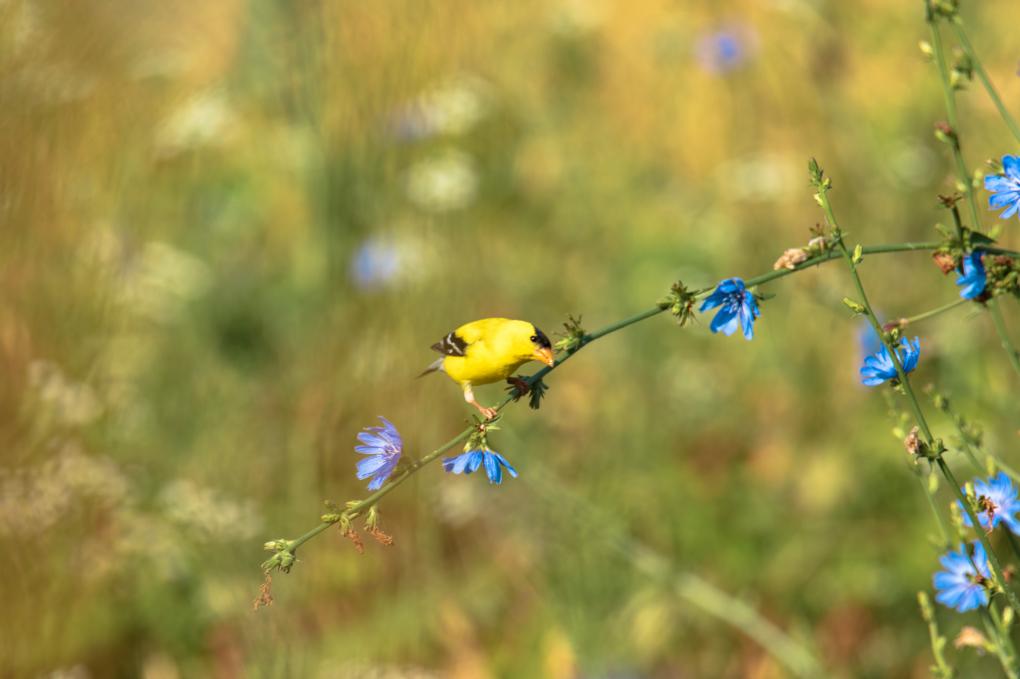
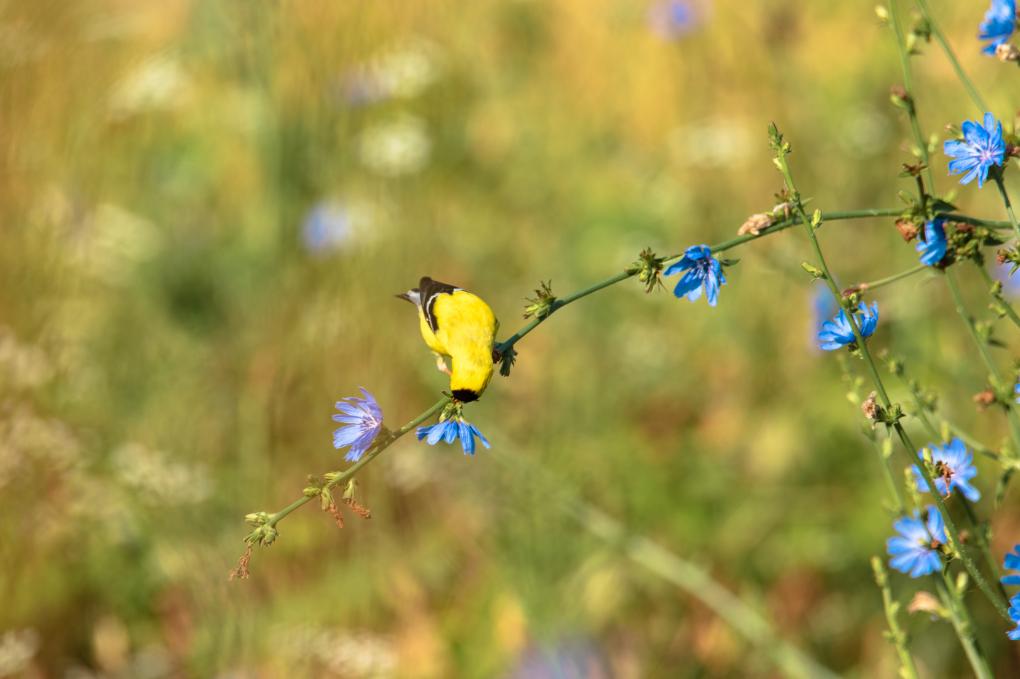
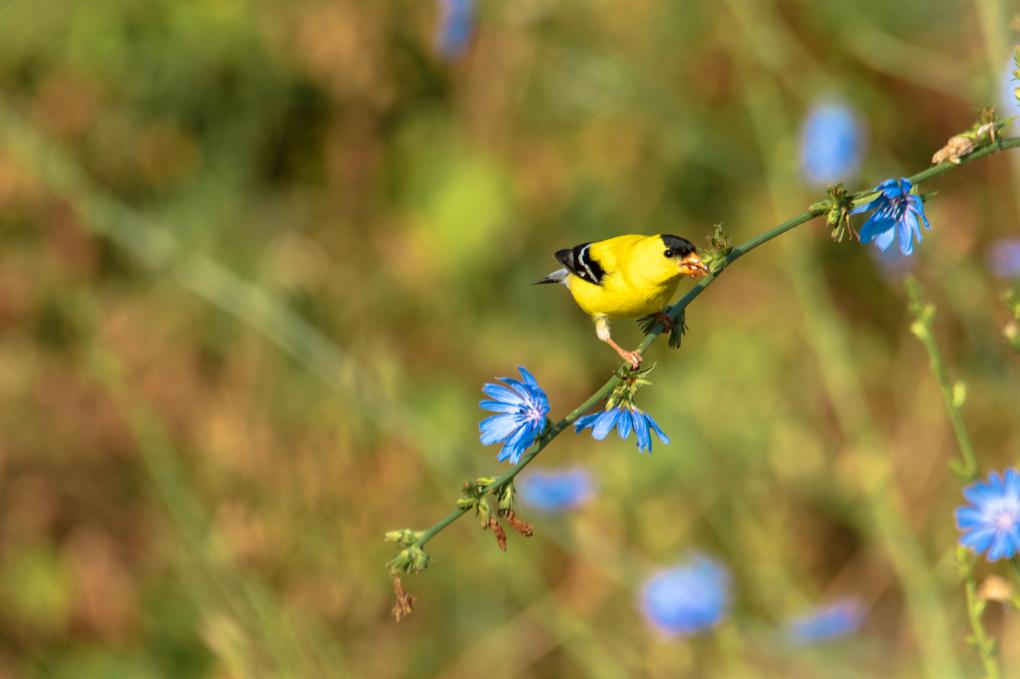
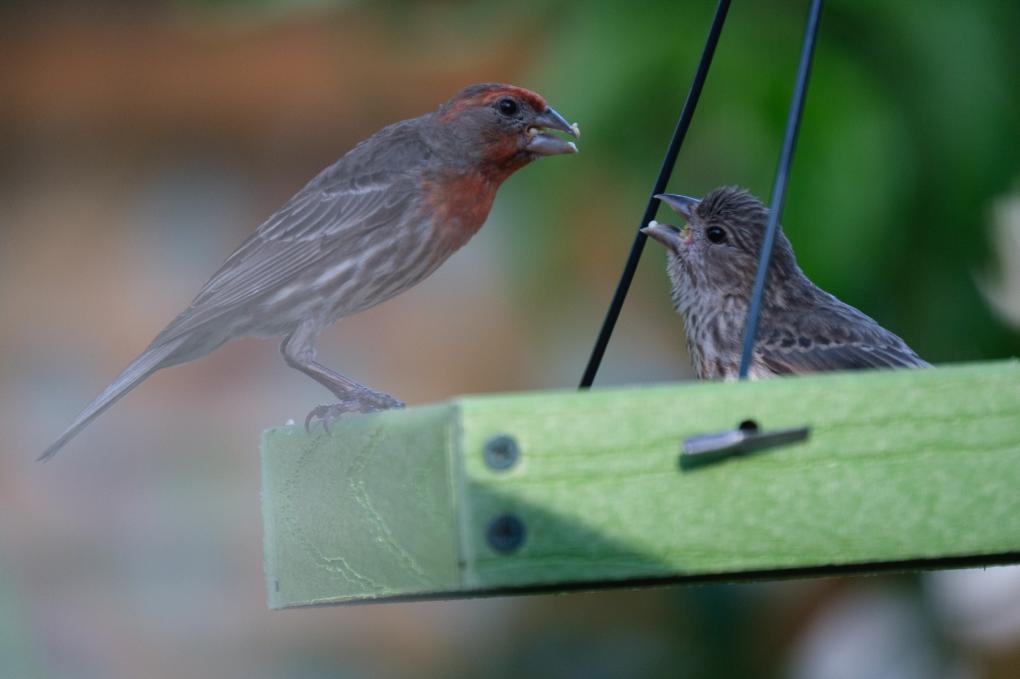

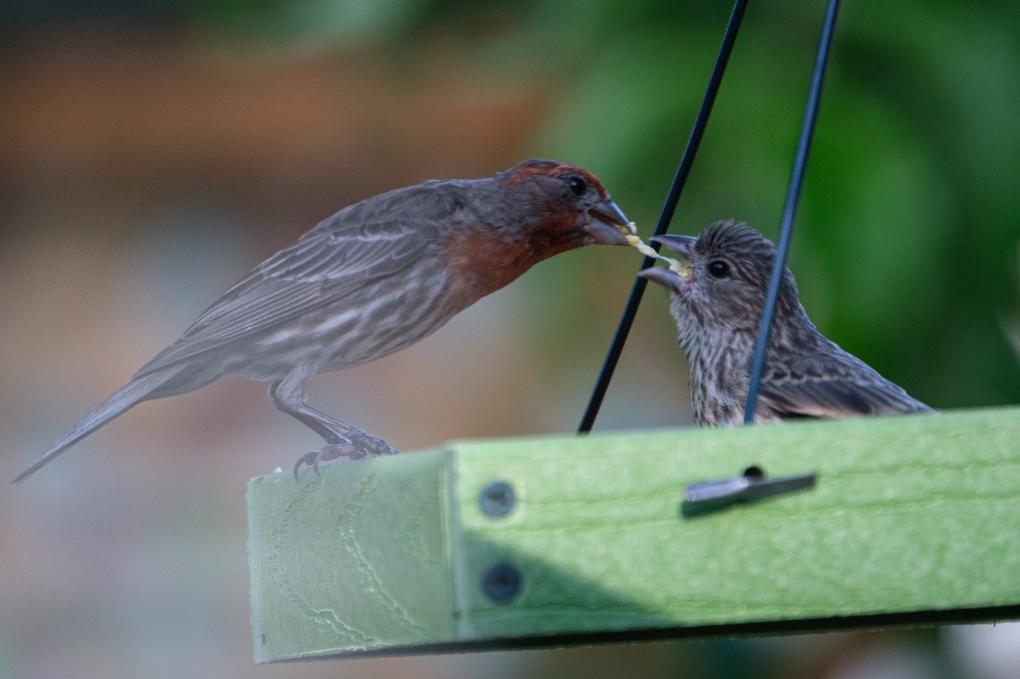 Hi Betsy. Here is a little sequence for you. The feeding lasted about 15 seconds and the dad gave a little bit of mushy seeds to the juvenile about 7 times. Looking closely at my photos and then doing more research it seems that he regurgitates in between.
Hi Betsy. Here is a little sequence for you. The feeding lasted about 15 seconds and the dad gave a little bit of mushy seeds to the juvenile about 7 times. Looking closely at my photos and then doing more research it seems that he regurgitates in between. 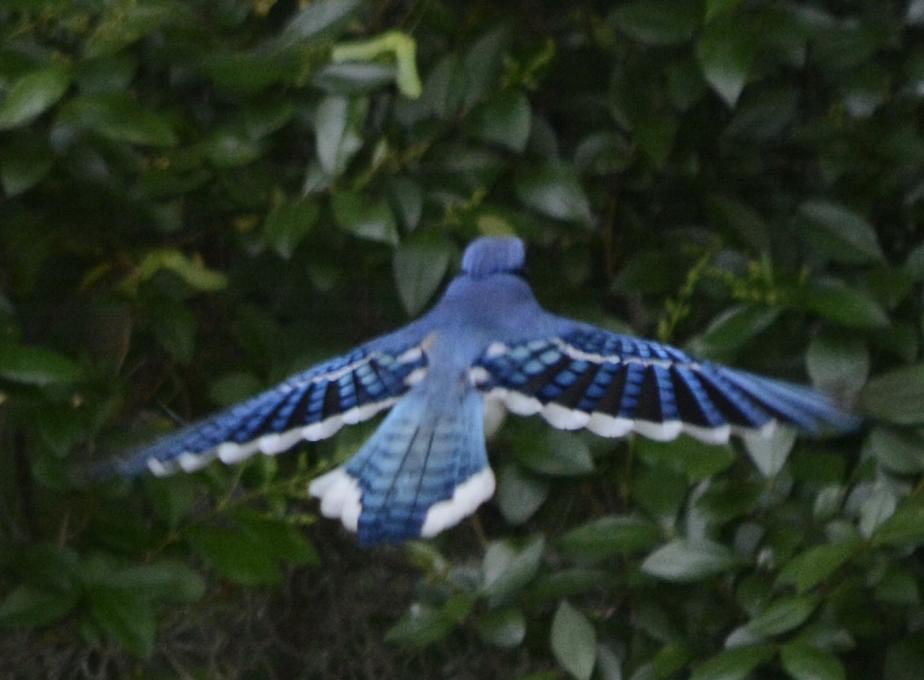
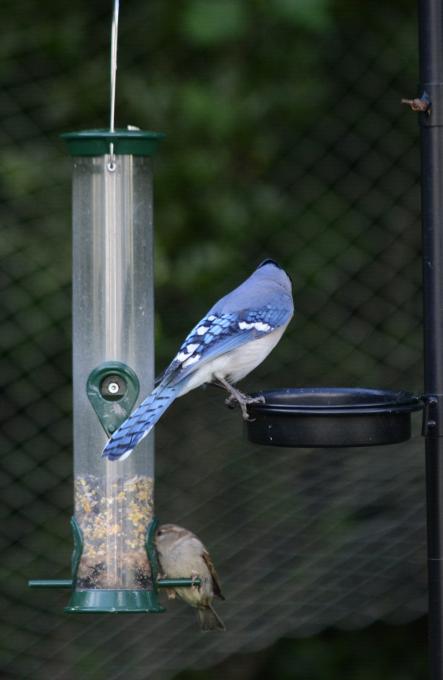
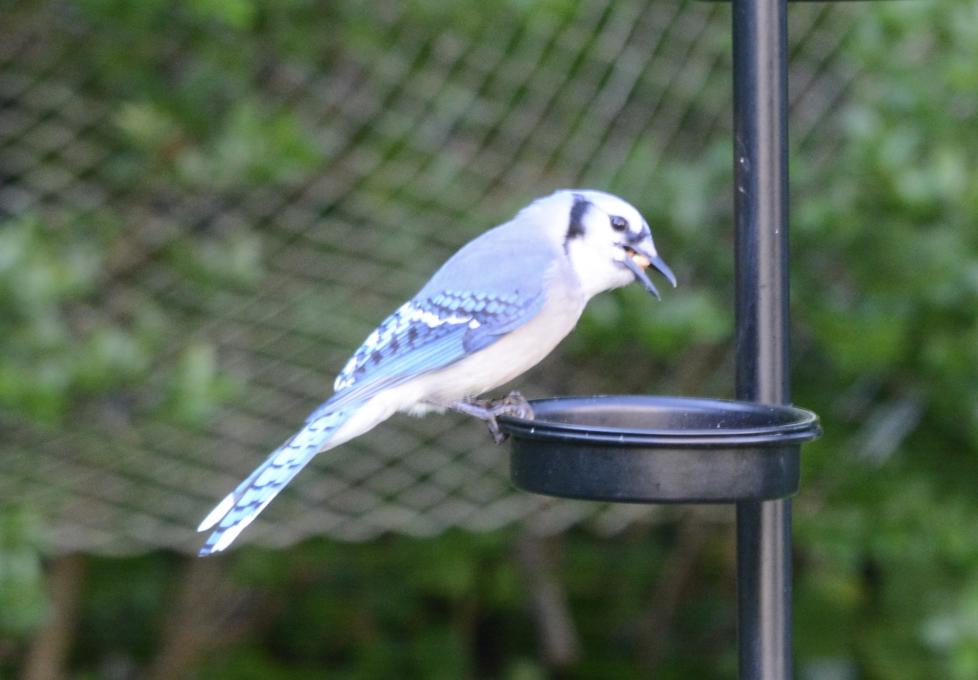
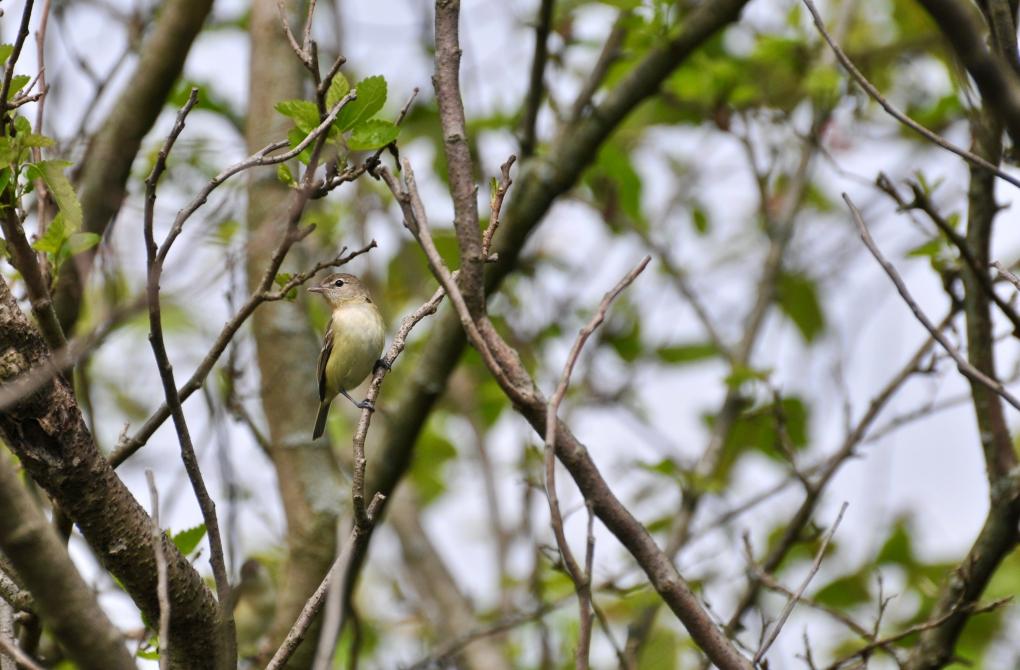
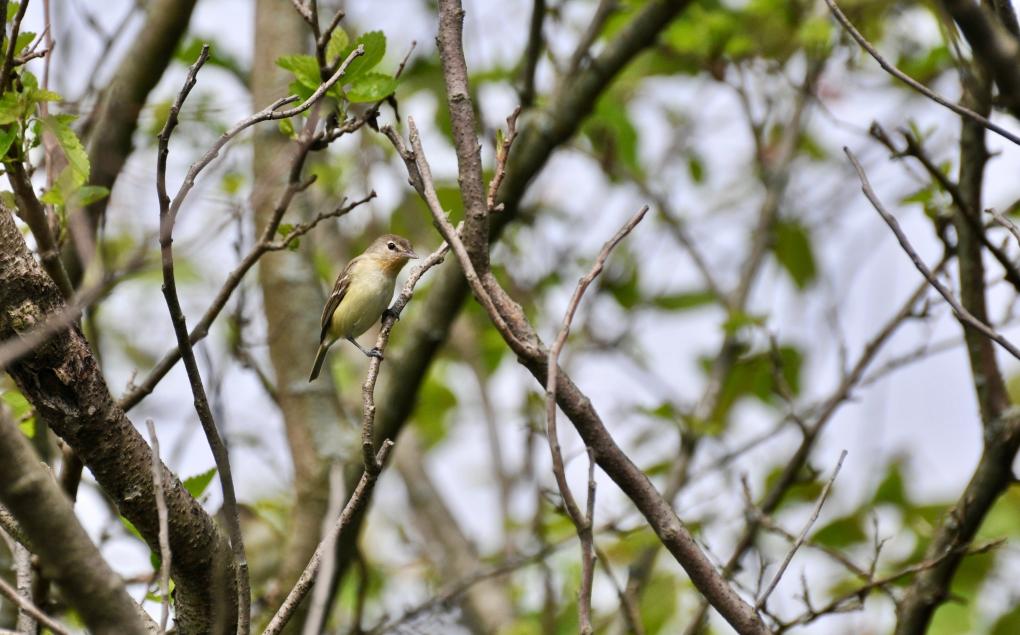
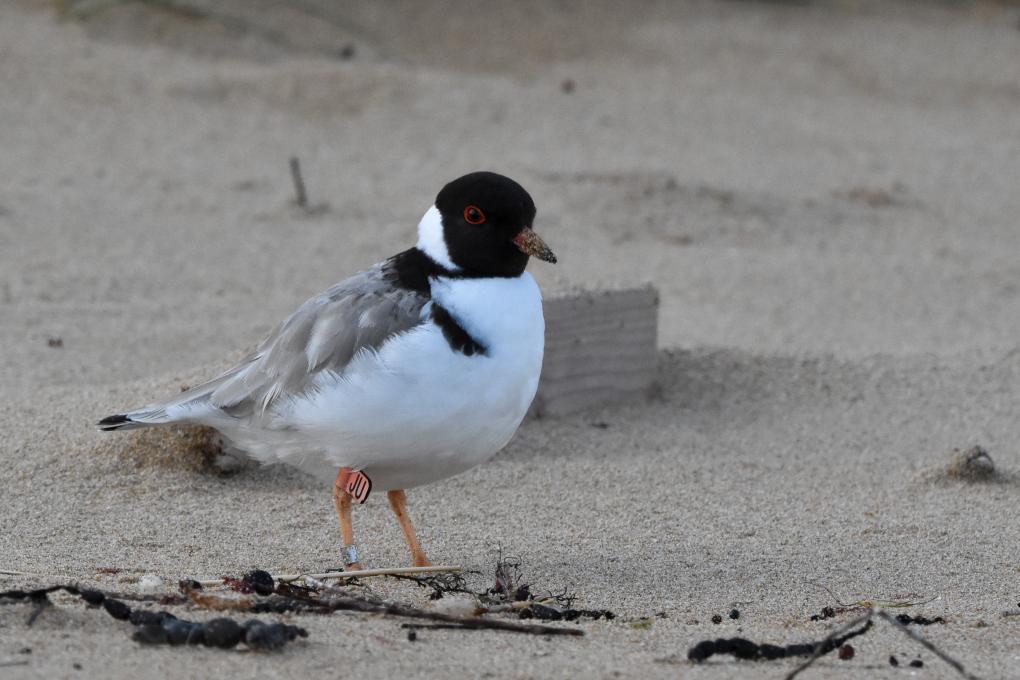
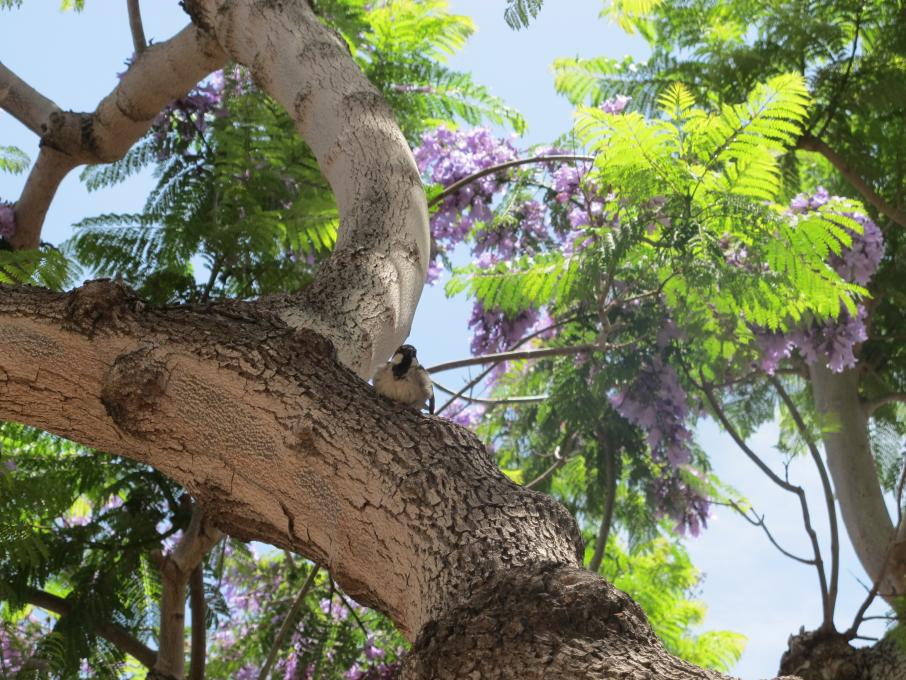

 In California where I live, the California Scrub Jay is a popular bird. He is very noisy and easy to find. He has blue feathers that stand out. One day in May, I was on a trail and saw one, I followed him with my binoculars as it went down a little ravine and into a bush. I saw him fly back in my direction holding what looked like a pretty yellow flower in its beak. I quickly took my camera and aimed it to the tree next to me where it landed thinking I might get some interesting shots if he stuck around. Usually, I see them holding acorns in their beaks, so a yellow flower was unusual. I was able to take several close-ups. It is only when I looked at my photos at home that I realized that the yellow flower was in fact a baby bird, its legs sticking out of the California Scrub Jay's beak. I did some research afterwards and realized that California Scrub Jays are omnivorous and can eat insects, caterpillars, snakes... They can also follow parents to their nest and steal their babies. After this experience, I observed their behavior even more carefully, they don't only eat acorns as I first thought.
In California where I live, the California Scrub Jay is a popular bird. He is very noisy and easy to find. He has blue feathers that stand out. One day in May, I was on a trail and saw one, I followed him with my binoculars as it went down a little ravine and into a bush. I saw him fly back in my direction holding what looked like a pretty yellow flower in its beak. I quickly took my camera and aimed it to the tree next to me where it landed thinking I might get some interesting shots if he stuck around. Usually, I see them holding acorns in their beaks, so a yellow flower was unusual. I was able to take several close-ups. It is only when I looked at my photos at home that I realized that the yellow flower was in fact a baby bird, its legs sticking out of the California Scrub Jay's beak. I did some research afterwards and realized that California Scrub Jays are omnivorous and can eat insects, caterpillars, snakes... They can also follow parents to their nest and steal their babies. After this experience, I observed their behavior even more carefully, they don't only eat acorns as I first thought.  Since I moved to St. Augustine, FL I have these lovely birds frequent my backyard and have counted up to 20 in one visit! Today there are 4 beautiful wild turkey girls that have been hanging out all morning. ISO 800, 220mm, f/6.3, 1/400s.
Since I moved to St. Augustine, FL I have these lovely birds frequent my backyard and have counted up to 20 in one visit! Today there are 4 beautiful wild turkey girls that have been hanging out all morning. ISO 800, 220mm, f/6.3, 1/400s. 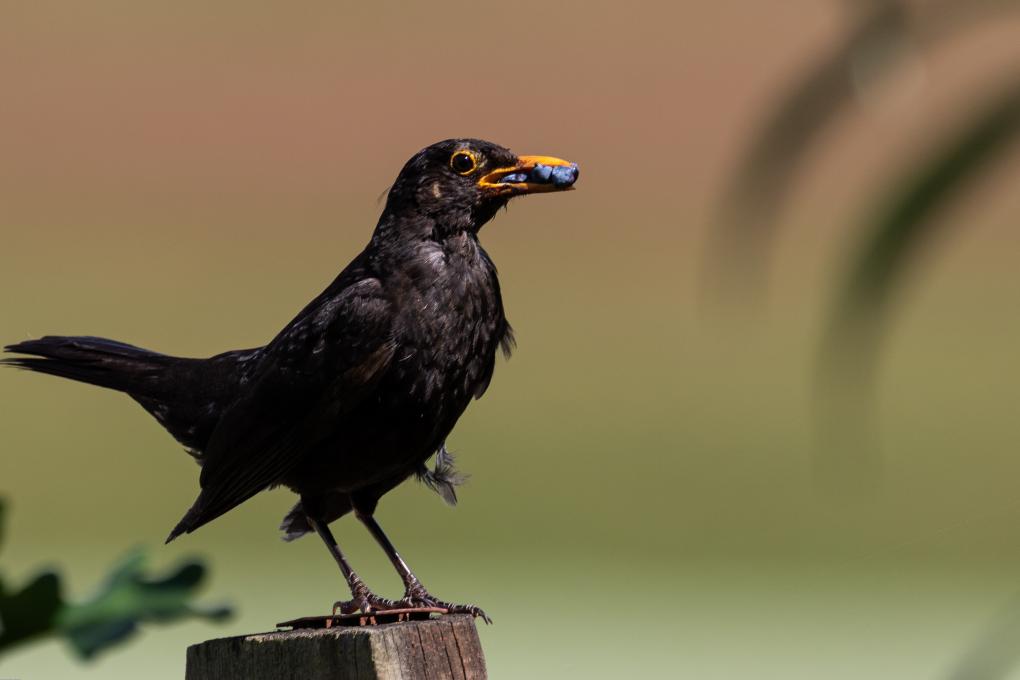 I have been watching the breeding cycle of a pair of Eurasian Blackbirds in my garden in the U.K. Their first attempt in early spring failed due to predation of both chicks, by who knows what. The male started singing from our rooftop again, and then a week or so ago I noticed that he was frantically collecting food and sitting on our back fence before darting off behind my garden office. Each time he saw me he would could call loudly protesting my presence. I managed to get a few photos on a beautiful sunny afternoon, but due to his agitation I did not follow up trying to find his nest, as I felt a great deal of empathy for this hard working chap. You can see the wear and tear on his feathers in the photo. I am pleased to report they have successfully fledged two chicks that were still around yesterday, and still being fed by the male. I have not yet managed to photograph the fledglings. This is a common resident species, but I have derived a great deal of pleasure witnessing their success in my garden and I hope that by holding back on trying to find their nest I have contributed to their eventual succes.
I have been watching the breeding cycle of a pair of Eurasian Blackbirds in my garden in the U.K. Their first attempt in early spring failed due to predation of both chicks, by who knows what. The male started singing from our rooftop again, and then a week or so ago I noticed that he was frantically collecting food and sitting on our back fence before darting off behind my garden office. Each time he saw me he would could call loudly protesting my presence. I managed to get a few photos on a beautiful sunny afternoon, but due to his agitation I did not follow up trying to find his nest, as I felt a great deal of empathy for this hard working chap. You can see the wear and tear on his feathers in the photo. I am pleased to report they have successfully fledged two chicks that were still around yesterday, and still being fed by the male. I have not yet managed to photograph the fledglings. This is a common resident species, but I have derived a great deal of pleasure witnessing their success in my garden and I hope that by holding back on trying to find their nest I have contributed to their eventual succes. 